Sensor Sweep: Lovecraft, Elric, Hugos, Forgotten Realms
Monday , 4, March 2024 Sensor Sweep 1 CommentHorror (RT Book Reviews): It’s always hard to believe that such prolific and influential writers died in relative obscurity during their time. The works of authors like Poe, Hemingway, and the focus of this list, HP Lovecraft all put out numerous works during their time on earth just to die penniless and unknown, with their stories only being read by niche fiction readers.
Fantasy (Paperback Warrior): Elric of Melnibone can lead anyone down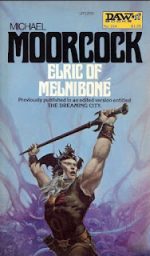 their own rabbit hole researching the novel, series, and grand mythos associated with the character. Elric first appeared in Michael Moorcock’s novella “The Dreaming City”, published in Science Fantasy in June, 1961. More Elric stories and novellas were published through the early to mid-1960s in Science Fantasy.
their own rabbit hole researching the novel, series, and grand mythos associated with the character. Elric first appeared in Michael Moorcock’s novella “The Dreaming City”, published in Science Fantasy in June, 1961. More Elric stories and novellas were published through the early to mid-1960s in Science Fantasy.
 Hugos (The Federalist): For the second time in 10 years, insiders of the World Science Fiction Convention (colloquially known as “Worldcon”) have bent their own rules in an attempt to police the bounds of what books and writers are to be seen as acceptable science fiction and fantasy. This time, they’ve done so on behalf of the Chinese Communist Party.
Hugos (The Federalist): For the second time in 10 years, insiders of the World Science Fiction Convention (colloquially known as “Worldcon”) have bent their own rules in an attempt to police the bounds of what books and writers are to be seen as acceptable science fiction and fantasy. This time, they’ve done so on behalf of the Chinese Communist Party.
Conan (Sprague de Camp Fan): A new Heroic Legends e-book! This time featuring Conan’s former lover, the pirate-captain, Bêlit. And the first one in the series written by a woman. (Not that there’s anything wrong with that.) Let’s examine Shipwrecked by V. Castro.
Appendix N (Goodman Games): This article is part of a series where the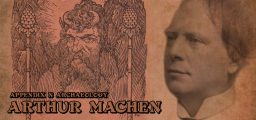 spotlight shines on some authors that inspired the writers we acknowledge today as influencing the creation of Dungeons and Dragons. For those unfamiliar with his fiction, the late Victorian era Welsh author Arthur Machen was admired by contemporaries like Sir Arthur Conan Doyle and William Butler Yeats. Further relevant for this article, his work is an acknowledged influence by Appendix N authors such as Clark Ashton Smith, Robert E. Howard, and H.P. Lovecraft.
spotlight shines on some authors that inspired the writers we acknowledge today as influencing the creation of Dungeons and Dragons. For those unfamiliar with his fiction, the late Victorian era Welsh author Arthur Machen was admired by contemporaries like Sir Arthur Conan Doyle and William Butler Yeats. Further relevant for this article, his work is an acknowledged influence by Appendix N authors such as Clark Ashton Smith, Robert E. Howard, and H.P. Lovecraft.
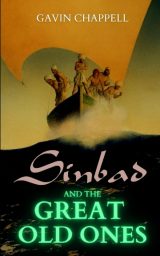 Review (DMR Books): Sinbad has experienced many adventures and would like nothing more than a quiet respite at his estate to enjoy the spoils of his youth. The Caliph poses an innocuous errand: collect his soon to be daughter-in-law and bring her back to Baghdad. The Mad Poet also covets the princess, for her blood holds a secret lineage that not even the princess is aware of.
Review (DMR Books): Sinbad has experienced many adventures and would like nothing more than a quiet respite at his estate to enjoy the spoils of his youth. The Caliph poses an innocuous errand: collect his soon to be daughter-in-law and bring her back to Baghdad. The Mad Poet also covets the princess, for her blood holds a secret lineage that not even the princess is aware of.
Comic Books (Dark Worlds Quarterly): Fire-breathing dragons! You won’t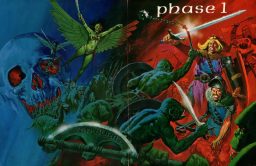 find any T. rexes or giant snakes here. These are Bronze Age Dragons, with wings and fiery breath. (well, mostly.) I looked at Four Color Dragons before (and I plan to again), and Superhero dragons, and even such dragonslayers like Sigurd and Beowulf. But this time I am doing only Sword & Sorcery comics and real dragons. I could include all those from the Warren Magazines but I refer you here instead. I also left out the Skywald. Of course I haven’t got every one of them.
find any T. rexes or giant snakes here. These are Bronze Age Dragons, with wings and fiery breath. (well, mostly.) I looked at Four Color Dragons before (and I plan to again), and Superhero dragons, and even such dragonslayers like Sigurd and Beowulf. But this time I am doing only Sword & Sorcery comics and real dragons. I could include all those from the Warren Magazines but I refer you here instead. I also left out the Skywald. Of course I haven’t got every one of them.
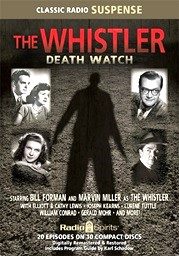 Old Radio (Tangent Online): The Whistler (1942-55) aired “What Makes a Murderer”” on August 13, 1945 as the 168th of its 760+ episodes (depending on how one counts). It is the 11th episode of the show we have run since 2017 and only the third since December of 2021. For newcomers, introductory background material on the show is reprised below (it was the most popular west coast radio show for many years), with the background providing context for its not totally unique but unusual narrative format.
Old Radio (Tangent Online): The Whistler (1942-55) aired “What Makes a Murderer”” on August 13, 1945 as the 168th of its 760+ episodes (depending on how one counts). It is the 11th episode of the show we have run since 2017 and only the third since December of 2021. For newcomers, introductory background material on the show is reprised below (it was the most popular west coast radio show for many years), with the background providing context for its not totally unique but unusual narrative format.
Forgotten Realms (The Other Side): This review will cover the Forgotten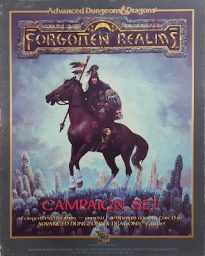 Realms Campaign Set, the Boxed set from 1987. Written by Ed Greenwood and Jeff Grubb and edited by Karen S. Boomgarden. But any insight to this product knows that the genesis was with Ed, and he first brought it all to life in the pages of Dragon magazine. At least that is alive to us. Many other authors have contributed to Realms over the decades, but here is where it begins.
Realms Campaign Set, the Boxed set from 1987. Written by Ed Greenwood and Jeff Grubb and edited by Karen S. Boomgarden. But any insight to this product knows that the genesis was with Ed, and he first brought it all to life in the pages of Dragon magazine. At least that is alive to us. Many other authors have contributed to Realms over the decades, but here is where it begins.
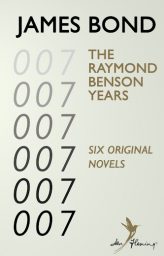 James Bond (The Book Bond): James Bond: The Raymond Benson Years is released today from Ian Fleming Publications. This eBook-only omnibus collects all six original Raymond Benson James Bond novels for the first time: Zero Minus Ten, The Facts of Death, High Time to Kill, Doubleshot, Never Dream of Dying, and The Man with the Red Tattoo.
James Bond (The Book Bond): James Bond: The Raymond Benson Years is released today from Ian Fleming Publications. This eBook-only omnibus collects all six original Raymond Benson James Bond novels for the first time: Zero Minus Ten, The Facts of Death, High Time to Kill, Doubleshot, Never Dream of Dying, and The Man with the Red Tattoo.
Music (Leo Leuqim): Performance in concert from the Original Soundtrack of CONAN THE BARBARIAN (John Milius, 1982) by the admired composer BASIL POLEDOURIS (1945-2006) who composed for this classic “Sword and Witchcraft”. Conan the barbarian score (OST).
Star Wars (Frontier Partisans): The Space Western is obviously a mix of the Western and Science Fiction. It’s often been derided as just a western with six guns replaced by ray guns. At its worse it can be but at its best it can be a tremendously entertaining genre. An example of the later is The Mandalorian.
Western and Science Fiction. It’s often been derided as just a western with six guns replaced by ray guns. At its worse it can be but at its best it can be a tremendously entertaining genre. An example of the later is The Mandalorian.
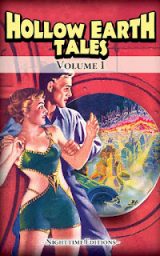 Science Fiction (Vintage Pop Fictions): There’s a whole sub-genre of science fiction dealing with the idea of a hollow earth, or undiscovered civilisations deep beneath the Earth. Hollow Earth Tales volume 1 is a collection of such tales from the pulpier end of the literary spectrum. They’re variable in quality but some are pleasingly off-the-wall.
Science Fiction (Vintage Pop Fictions): There’s a whole sub-genre of science fiction dealing with the idea of a hollow earth, or undiscovered civilisations deep beneath the Earth. Hollow Earth Tales volume 1 is a collection of such tales from the pulpier end of the literary spectrum. They’re variable in quality but some are pleasingly off-the-wall.
Science Fiction (Atomic Junk Shop): According to his creator, SF novelist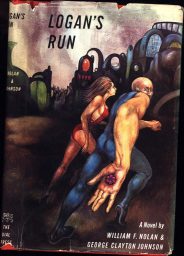 William F. Nolan, Logan the Sandman began when Nolan was asked to lecture a college class in 1963. I’m guessing this was probably one of the first times anyone had seriously addressed the subject of science fiction in an academic setting, even just as a guest speaker. I think Robin Scott Wilson’s famous Clarion SF workshops were still five or six years away.
William F. Nolan, Logan the Sandman began when Nolan was asked to lecture a college class in 1963. I’m guessing this was probably one of the first times anyone had seriously addressed the subject of science fiction in an academic setting, even just as a guest speaker. I think Robin Scott Wilson’s famous Clarion SF workshops were still five or six years away.
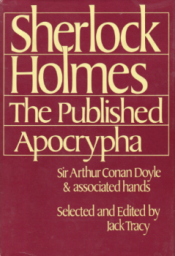 Sherlock Holmes (Black Gate): I am bringing back The Public Life of Sherlock Holmes for a Doyle-centric run in April. Getting in the mood, here’s my review of Jack Tracy’s cornerstone book, Sherlock Holmes: The Published Apocrypha. Sherlockians like to hold the Canon (Doyle’s sixty Holmes stories) in the same esteem that Christians hold the Bible.
Sherlock Holmes (Black Gate): I am bringing back The Public Life of Sherlock Holmes for a Doyle-centric run in April. Getting in the mood, here’s my review of Jack Tracy’s cornerstone book, Sherlock Holmes: The Published Apocrypha. Sherlockians like to hold the Canon (Doyle’s sixty Holmes stories) in the same esteem that Christians hold the Bible.
Pulp (Dark Worlds Quarterly): Last time I focused on five of the better realized creatures from Wonder Stories. This time I’ve got five more from that magazine. These creatures may not be as well done as that last batch but I find them intriguing all the same. As Clare Winger Harris explained in a letter to the editor and other fans in 1931, Science Fiction themes include at least four monster categories: #5: gigantic insects, #6: gigantic man-eating plants, #8: Monstrous forms of unfamiliar life and #10: The creation of synthetic life.
Fiction (Paperback Warrior): Henry “Harry” Patterson (1929-2022) became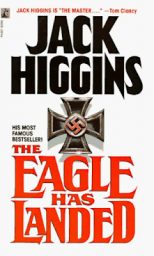 a household name using the pseudonym of Jack Higgins. The British author was prolific from 1959 through 1974, producing 34 novels including a six-book series of spy-fiction starring secret agent Paul Chavasse. The author didn’t achieve global success until 1975 when he produced the WW2 thriller The Eagle Has Landed, written under the Jack Higgins name.
a household name using the pseudonym of Jack Higgins. The British author was prolific from 1959 through 1974, producing 34 novels including a six-book series of spy-fiction starring secret agent Paul Chavasse. The author didn’t achieve global success until 1975 when he produced the WW2 thriller The Eagle Has Landed, written under the Jack Higgins name.
Cinema (Overlord DVD): Dune 2 hits theaters June 29th, but we have an early spoiler-free review here for you right now! Does the sequel live up to the promise of the first film? Or were our fears that it would pull the old bait and switch justified? Wonder no more my friends – we have the story here!
Star Wars (Venture Beat): The highest profile casualty is among EA’s cancelled projects is Respawn’s untitled Star Wars first person shooter. The company first announced the project in 2022 with Peter Hirschmann, game director at Respawn, leading the team. EA is reassigning the bulk of these developers to other projects. These include Apex Legends, Iron Man, Black Panther and The Star Wars: Jedi series’ third installment.
Tolkien (Reactor Mag): Sometimes, the right book comes along with the right message at the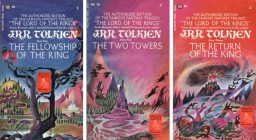 right time and ends up not only a literary classic, but a cultural phenomenon that ushers in a new age. One such book is the first official, authorized paperback edition of The Lord of the Rings by J.R.R. Tolkien…
right time and ends up not only a literary classic, but a cultural phenomenon that ushers in a new age. One such book is the first official, authorized paperback edition of The Lord of the Rings by J.R.R. Tolkien…
And when I talk about the book ushering in a new age, I’m not referring to the end of the Third and beginning of the Fourth Age of Middle-earth—I’m talking about the creation of a new mass market fictional genre.
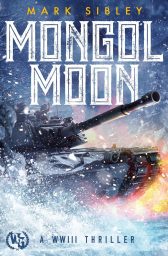 Fiction (With Both Hands): Mongol Moon by Mark Sibley is a throwback to my youth, when Tom Clancy was one of the most popular authors in the world and you could see people toting massive tomes with Clancy’s name emblazoned on the cover everywhere.
Fiction (With Both Hands): Mongol Moon by Mark Sibley is a throwback to my youth, when Tom Clancy was one of the most popular authors in the world and you could see people toting massive tomes with Clancy’s name emblazoned on the cover everywhere.
Cinema (Critical Drinker): Money talks and now Hollywood is finally learning that people are sick of wokeness in movies. Make Films Great Again.
Art (DMR Books): To quickly recap things… Back in May, 2020, I did a blog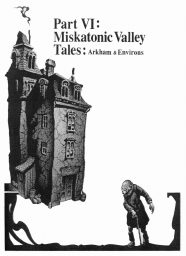 entry on In Lovecraft’s Shadow, which was published in 1998. That book contained most of Derleth’s Mythos-related short stories and poetry. It was beautifully illustrated by the legendary Stephen Fabian and those illos were the focus of my post.
entry on In Lovecraft’s Shadow, which was published in 1998. That book contained most of Derleth’s Mythos-related short stories and poetry. It was beautifully illustrated by the legendary Stephen Fabian and those illos were the focus of my post.
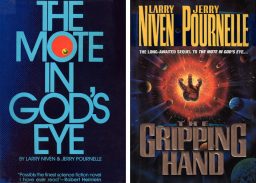 Science Fiction (Reactor Mag): Even before the stories were called “science fiction,” authors have speculated on and theorized about contact with alien beings. In 1974, two of the era’s most popular science fiction authors, Larry Niven and Jerry Pournelle, decided to team up and produce the ultimate first contact novel, a tale they called A Mote in God’s Eye. Their different approaches to storytelling ended up meshing quite well; not only did they produce a landmark novel, they started a best-selling collaboration that lasted for decades.
Science Fiction (Reactor Mag): Even before the stories were called “science fiction,” authors have speculated on and theorized about contact with alien beings. In 1974, two of the era’s most popular science fiction authors, Larry Niven and Jerry Pournelle, decided to team up and produce the ultimate first contact novel, a tale they called A Mote in God’s Eye. Their different approaches to storytelling ended up meshing quite well; not only did they produce a landmark novel, they started a best-selling collaboration that lasted for decades.
History (Men of the West): Unless Macedonia be included within the limits of ancient Greece, it may appear, at first sight, a contradiction in terms to speak of Greek Imperialism. Etymologically speaking, the word “Imperialism” connotes, or should connote, the existence either of emperors or, at all events, of rulers under some other name, in whom large, if not altogether despotic, powers are vested.
History (Cambrian Chronicles): In recent years, Wikipedia has frequently picked up some controversy for being less than reliable. Last time, I showed you how one editor in a niche corner of online Welsh history could completely distort reality, and create a king who didn’t exist. This time, however, is different. This time, the history of Wales has not just been morphed by a lone editor, but by a series of historical mistakes spanning over 3 centuries.
Thanks for the mention!